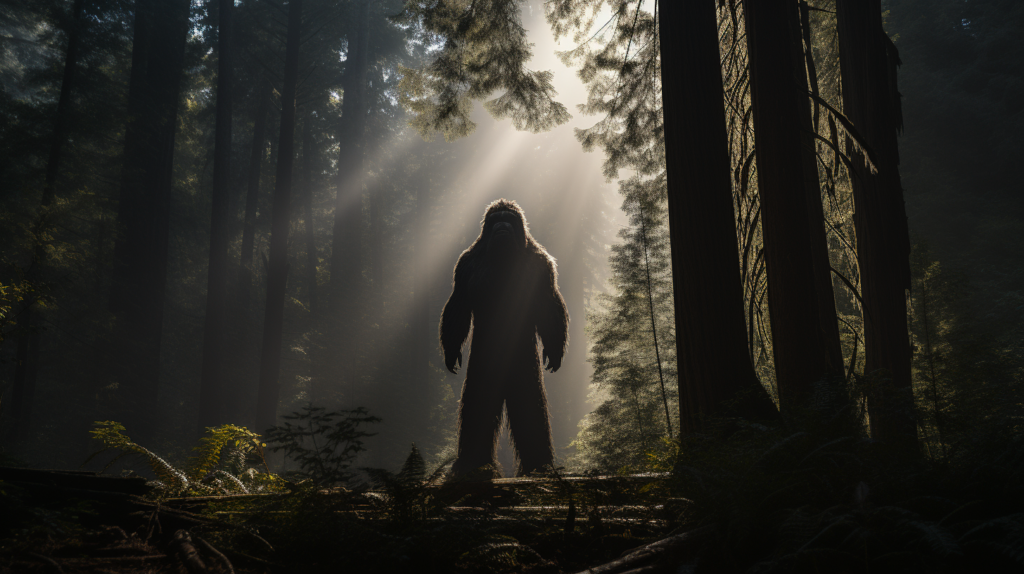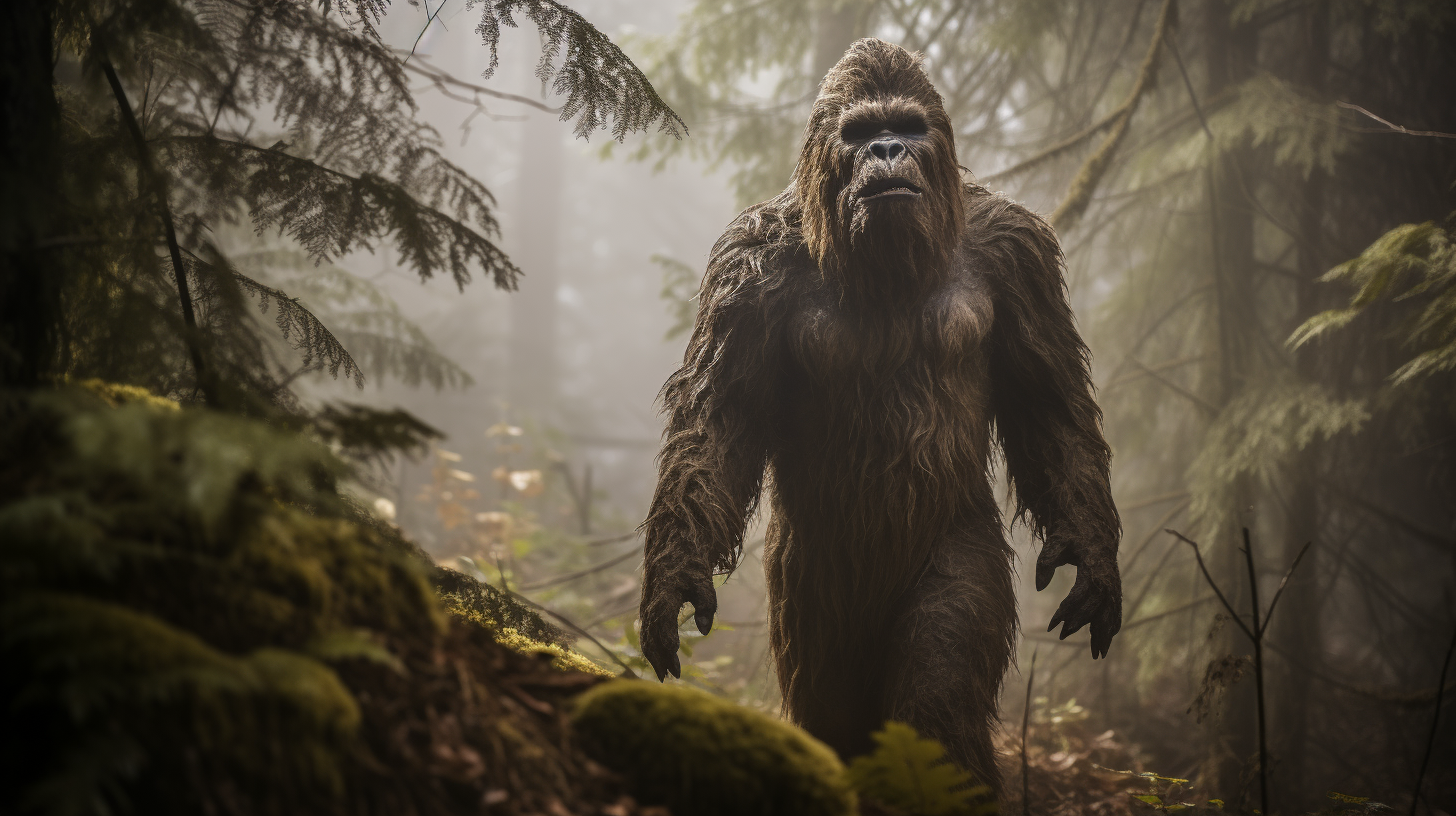The allure of creatures lurking in the uncharted realms of our planet captivates the imagination and sparks an innate curiosity in people.
Bigfoot, also known as Sasquatch, stands as the quintessential example of such enigmatic entities that anchor the field of cryptozoology. This branch of study, far from the mainstream scientific community, devotes itself to identifying and researching animals that are considered legendary or undiscovered.
Reports of Bigfoot sightings contribute significantly to the cryptozoological archives, offering a combination of anecdotal narratives and, on occasion, physical evidence that fuel ongoing investigations.
These encounters with the legendary creature are more than just stories; they serve as the foundation for a larger conversation about what could be hiding in the dense forests of North America and beyond.
The evocative power of Bigfoot reports nurtures the persistent belief in the creature’s existence among enthusiasts and researchers alike.
Skeptics and proponents of cryptozoology dissect these accounts, weighing the credibility of eyewitness reports, footprint casts, and grainy videos in an attempt to separate myth from a possible undiscovered reality.
Historical Context and Influential Figures
Bigfoot sightings have significantly shaped the study of cryptozoology, a field dedicated to investigating cryptids. This section will explore the field’s historical development and the pivotal figures who have propelled its growth.
Cryptozoology’s Origins and Evolution
Cryptozoology, which quite literally means the “study of hidden animals,” is a field that investigates creatures whose existence is disputed or unsubstantiated by mainstream science. It first gained recognition in the mid-20th century, although it draws upon a much longer legacy of folklore and monster tales.
French zoologist Bernard Heuvelmans is often hailed as the ‘father of cryptozoology.’ His influence came from his book “On the Track of Unknown Animals,” which set the foundation for the field by categorizing and analyzing reports of creatures like Bigfoot, yet to be accepted by conventional zoology.
Prominent Cryptozoologists and Their Contributions
Two other notable figures have been central to cryptozoology’s advancement. Ivan T. Sanderson, a naturalist and author, introduced many to cryptids with his extensive research and writing. He brought a scientific rigor to otherwise dismissed topics, demanding that they be taken seriously.
Loren Coleman, an American cryptozoologist and author, followed in their footsteps by publishing significant works on Bigfoot and other cryptids. Coleman contributed to cryptozoology’s persistence into the modern era, providing a crucial link between historical accounts and contemporary witness testimonies. His founding of the International Cryptozoology Museum has helped to communicate cryptozoology’s relevance to a wider public audience. These individuals’ work demonstrates how folklore and subsequent Bigfoot reports have been integral in this burgeoning field of study.
Bigfoot in the World of Cryptozoology
In the mosaic of cryptozoological research, Bigfoot remains a compelling figure, bridging the gap between myth and modern inquiry. This enigmatic creature not only captivates the public imagination but also garners attention from a dedicated community of researchers analyzing evidence and exploring its cultural significance.
Bigfoot Sightings and Evidence Analysis
Bigfoot, also known as Sasquatch, is frequently reported in North American forests, with sightings underpinning much of cryptozoology’s allure. Witnesses often report enormous, hairy bipeds with human-like characteristics, leading to a multitude of bigfoot footprint casts being analyzed for authenticity.
The Patterson-Gimlin film is perhaps the most famous piece of visual evidence, depicting a figure that proponents argue is Bigfoot, maintaining its status as a keystone in cryptozoology despite controversies over its legitimacy.
- Photos & Footage: Patterson-Gimlin film
- Physical Evidence: Bigfoot footprint casts
- Sightings: Eyewitness reports
Validating such evidence remains challenging, as concrete scientific proof eludes researchers. However, science still plays a vital role, as DNA analysis and other scientific methods are applied to hair samples and other potential evidence, albeit with inconclusive results.
Cultural Impact of Sasquatch
Beyond the quest for physical proof, Bigfoot holds a significant place in native folklore, symbolizing a bridge between past and present. The creature’s likeness is woven into the fabric of indigenous narratives, portraying it as a guardian of the woods or a reminder of a once-greater connection to nature.
- Traditions: Native American stories
- Societal Influence: Popular media & public interest
As Bigfoot’s enigma enters wider public consciousness, it becomes a cultural icon, featuring in films, books, and merchandise. This fascination reflects humanity’s inherent curiosity about the unknown and the unexplored realms of our planet.
Bigfoot’s portrayal in popular media often fluctuates between a mystical entity and a subject of pseudoscientific speculation, illustrating the complex relationship society has with cryptozoological pursuits.
Technological Advances and Research

In the elusive pursuit of creatures like Bigfoot, cryptozoologists have turned to modern technology and scientific methods to bolster the credibility of their field. These advancements play a crucial role in analyzing evidence and solidifying the rigorous approach to the study of reported sightings and found material.
DNA Testing and Its Significance
Advancements in DNA testing have been extremely significant for cryptozoology, allowing for the meticulous examination of evidence such as hair samples. These samples are often claimed to be from cryptids like Bigfoot.
By comparing the genetic material in these samples to known species, researchers can determine if they belong to an undiscovered creature. A notable example is the assertion made in a study that a DNA sample suggested the possible existence of an unknown hominin, bringing scientific discussion into the public sphere through its claims.
The Role of Tech in Cryptozoology
The deployment of technology in field research has revolutionized cryptozoology. High-definition cameras and audio recording devices have substantiated sighting reports with tangible evidence.
Drones offer a bird’s-eye view of remote areas, and thermal imaging can reveal the presence of warm-blooded animals in dense forests at night.
This equipment aids researchers in collecting data that could undergo rigorous analysis, potentially even peer review. Technology not only helps in gathering data but also in sharing findings through platforms and peer-reviewed scientific journals, enhancing the collaboration needed to advance the field.
Debates and the Scientific Community
The intersection of Bigfoot reports with cryptozoology sparks ongoing discourse, scrutinizing the validity of such accounts and the methodology employed in this field of study.
Mainstream Science vs. Cryptozoology
Mainstream science often regards cryptozoology as existing on the fringe, citing a lack of empirical evidence and peer-reviewed scientific journals to support its claims. Proponents of cryptozoology argue that creatures like Bigfoot represent unexplored mysteries that mainstream science has yet to fully acknowledge or understand.
On the other hand, the scientific community is grounded in rigorous methodology and typically dismisses cryptozoological pursuits as pseudoscience. Entities such as Skeptical Inquirer frequently challenge the credibility of findings within this field, emphasizing the necessity for verifiable and falsifiable evidence.
The Boundary Between Myth and Reality
Distinguishing between myth and reality poses a significant challenge within cryptozoology. Hoaxes and misidentifications often blur the lines, contributing to skepticism.
Despite numerous Bigfoot sightings and reports, definitive proof has eluded enthusiasts and scientists alike. The complexity arises in cryptozoology’s reliance on anecdotal accounts and the inherent difficulty in disproving the existence of something.
As a result, when supposed evidence of Bigfoot surfaces, it’s met with stringent scrutiny from the scientific community, which demands tangible, replicable results.
Frequently Asked Questions
In the pursuit of understanding the uncharted zoological landscape, Bigfoot sightings provide valuable data for cryptozoologists and potentially impact mainstream scientific thought.
What evidence do Bigfoot sightings bring to the study of unknown animals?
Bigfoot sightings often yield physical evidence such as footprints or hair samples, which researchers analyze in the hope of uncovering new species.
How do cryptozoologists analyze evidence of creatures like Bigfoot?
Researchers in cryptozoology employ scientific methodology, analyzing physical samples, eyewitness accounts, and historical records to investigate the existence of cryptids like Bigfoot.
In what ways has the search for Bigfoot influenced mainstream science and academia?
The search for Bigfoot has sparked discussions within academia, sometimes leading scientists to re-examine the methodology and evidence standards in mainstream science.
How do Bigfoot footprints compare to those of known wildlife, from a cryptozoological perspective?
Cryptozoological analysis of Bigfoot footprints involves comparing size, shape, and gait patterns with those of known wildlife, searching for consistencies or anomalies that might indicate a new species.
What methodologies do researchers use to differentiate between Bigfoot and Yeti encounters?
Researchers use geographical location, witness descriptions, footprint analysis, and local folklore to differentiate between Bigfoot and Yeti encounters, understanding each cryptid’s unique characteristics and cultural contexts.
Can you describe the historical impact of Bigfoot on the field of Cryptozoology?
Bigfoot has historically acted as a cornerstone in cryptozoology, drawing public interest and increasing support for research into unknown animals. This curiosity has shaped the field’s development and has been a driving factor in the search for cryptids.

